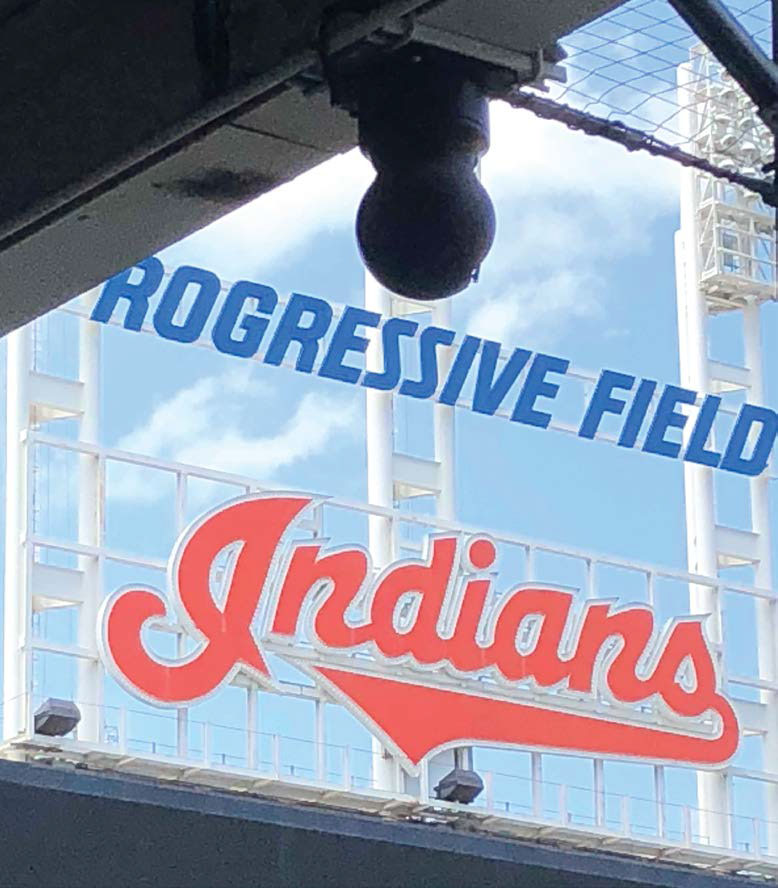Cleveland Indians Keep a RoboEye On Performance with Telemetrics
CLEVELAND—I work in the Baseball Operations department of the Cleveland Indians and, among other things, we use video extensively to help players and the coaching staff with advance scouting and self-scouting analysis. Our goal is to put our players in the best position for success and we take pride in doing that for each and every home game.

Our capabilities were strengthened when we installed four RoboEye Integrated PTZ Cameras and a single RCCP-1 Remote Camera Control Panel from Telemetrics. Two of the integrated HD cameras, installed in 2015, are mounted (one each) in the home and away team bullpens. A corresponding video monitor has been mounted inside each dugout to allow the respective coaches to monitor pitcher activity. The other two RoboEye cameras, installed last fall, are mounted between the upper and lower bowl of the ballpark (Progressive Field) that are trained on home plate. These we use to capture our hitters—one from the direct side and one from the open side—to give them and the coaches several angles from which to watch and learn.
IMPROVED ANALYSIS
We really like the image quality produced with the RoboEye cameras, which offer a S/N ratio of 50dB and a sensitivity level of F8 at 2,000 lux. It’s a full HD (1920 x 1080 HDSDI) camera and we can paint them with the RCCP-1 control panel to get the best-looking images possible for our coaching needs. The PTZ camera includes an integrated Sony Exmor 2.18-megapixel CMOS image sensor and a 30X zoom lens for all the focal range we need. For our operators’ convenience, gain setup is automatic with a manual override.
The clarity of the HD video coming from the RoboEyes is much better than any other camera we have ever used. This has given our players and coaches a lot of material to work with. We shoot at 60 fps, so that they can slow the motion down for better analysis in terms of mechanics and performance.
Using the RCCP-1 control panel, the Telemetrics cameras are operated by one of several people on my staff and since we got it last fall everyone has found it to be easy to use and very intuitive. We store presets on the panel when we find angles that someone particularly likes to work with, but the operator can change the angle at any time with the panel’s joystick. It’s also got a nice touchscreen interface that makes shot select fast and easy.
Using robotic cameras allows us to have a camera position that’s rock solid—without a human operator—in all types of weather. We actually have seven robotic cameras in the ballpark, some from other manufacturers, but the four Telemetrics RoboEye cameras are the most robust and really never need attending to. [Those extra feeds, in conjunction with network cameras feeding into our system, means we are monitoring up to 15 different angles at the same time of every pitch.] The control panel is not used for the other robotic cameras, but if we decide to get more RoboEyes, we’ll feed them into the RCCP-1 as well.
To sum it all up, we had to have a reliable camera that performed without errors under the most adverse conditions (including Cleveland weather). The RoboEye has been that camera for us. While they produce a great image, and can be robotically controlled with ease, these things are built like little bowling balls. I truly believe that if the RoboEye took a direct hit from a baseball, it would not be affected at all, whereas some of our other cameras wouldn’t be as lucky. In fact, we had a ball smash a broadcast lens on one of the network cameras the other day. It was not pretty.
Bob Chester has worked in the Baseball Operations department for The Cleveland Indians, in various capacities, since 1995. He can be reached atbchester@indians.com.
For more information on Telemetrics, visitwww.telemetricsinc.comor call 201-848-9818.
Get the TV Tech Newsletter
The professional video industry's #1 source for news, trends and product and tech information. Sign up below.
